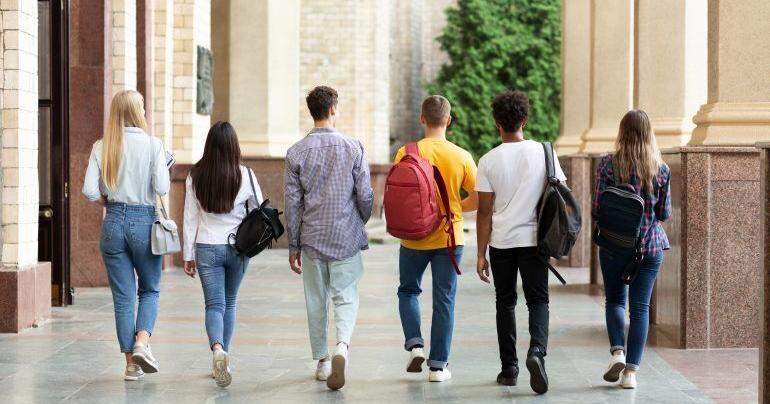Anna Helhoski
Defaulting on a student loan starts the same way for everyone: a missed payment. Then another. And another. Until a total of nine months – about 270 days – pass and your payment defaults.
Three months later, it’s much worse.
A collection agency now owns your debt and you owe them the full balance of your loan plus late fees and collection charges. They can garnish your wages and withhold your tax refund. Your credit is damaged and you are no longer eligible for financial assistance. During this time, interest accrues on your loan balance.
A total of 26.6 million people are expected to resume student loan repayments on May 2 after a pause since March 13, 2020, and government agencies, advocates and lawmakers fear the number of borrower defaults will swell. .
People also read…
Affected parties are most concerned about recent graduates, students who have not completed their studies and those who had missed payments before the suspension of payments.
It will take several months to see if those borrowers — about half of student loan recipients — default, says Michele Streeter, director of policy and advocacy at the Institute for College Access and Success, or TICAS, an organization non-profit higher education institution. research organization.
“It may be a slow disaster,” she says.
Who is at risk of delinquency and default?
Most borrowers, however, are likely to avoid default, says Adam Looney, nonresident senior fellow in economic studies at the Brookings Institution.
“Most people who owe student loans are graduates, they may have advanced degrees, and they’ve weathered the economic downturn better than any other American,” Looney said. “After two years of a payment pause, many borrowers are in very good economic shape and should be well prepared to start making payments.”
But a payment default can occur if your finances are fragile to begin with. According to federal data analyzed by TICAS, about 90% of those who defaulted entered college from low-income backgrounds.
It’s not that people who can afford to pay are choosing not to, Streeter says.
“These are people trying to get out of poverty by enrolling in college and they either couldn’t complete the program or it didn’t pay off one way or another,” she says. “They’ve done everything they can to break that cycle and something is going wrong and they’re just getting deeper and deeper into a hole.”
In a Jan. 27 report from the Government Accountability Office, the Department of Education says about half of all borrowers are at increased risk of late payment, which is the first step that leads to default. The riskiest borrowers are those who:
- Have not completed their degree program.
- Were overdue prior to the payment break.
- Started repaying their loans in the last three years.
Your ability to repay is what affects your likelihood of default, not how much you owe. Those with PLUS loans for graduates and parents, which are not capped, tend to have the highest balances. But Looney says the majority of those with high balances are less likely to default. Numerous analyzes of federal data show that borrowers who have defaulted typically have low balances and have not completed their education.
There may be outliers such as those whose college programs lead to lower-paying jobs and whose parents reach retirement age.
You can’t suddenly pay off your debt if you don’t have the money to do so. But you can work with existing options to ease the burden, even if you’re unemployed.
How to avoid chargebacks and defaults
If you can afford your monthly payment on a standard payment plan, stick with it. But if you can’t make your payments and are at risk of default, contact your service agent to:
- Look for a more affordable payment. Consider a reimbursement based on income plan, which ties your monthly payment amount to a portion of your income and extends repayment to 20 years for undergraduate loans or 25 years if you have graduate school debt or PLUS parent loans. It is possible that at the end of this repayment period, you will see the rest of your canceled debtbut it is rare.
- Sign up for automatic payments. If you were enrolled in automatic payment before the payment pause, you must contact your service agent to confirm that you wish to restart automatic payments; it will not happen without your consent.
- Consider an extra break. If you are unemployed or need a short-term payment break, consider an unemployment deferral or hardship forbearance. However, interest will continue to accrue and increase the principal of your loan.
If you don’t get the help you need from your servicer, contact the Federal Student Loans Ombudsman to escalate your problem. And report any mishandling of your loans to the Consumer Financial Protection Bureau, the Federal Student Aid Feedback Center, your state ombudsman, or the attorney general’s office.
What borrowers in default can do
Borrowers in the most precarious situation are those whose loans were in default before the pandemic. The Department of Education is conducting outreach to these borrowers, but does not have valid email addresses for at least 25% of them, according to the GAO report.
There is additional leeway for borrowers in default: the Ministry of Education has suspended collection activities until November 1, 2022.
This means borrowers in default have more time to collect their payments in good standing. There are two main ways to do this.
The most difficult option is to repay the entire loan balance.
The other choice is to undergo student loan rehabilitation, but you can only do this once. First, borrowers must accept a reasonable repayment amount, typically 15% of their discretionary income. Then they must make nine voluntary on-time payments over a 10-month period and finally enroll in an income-driven repayment plan after rehabilitation is complete.
The article Are you at risk of student loan default? originally appeared on NerdWallet.

